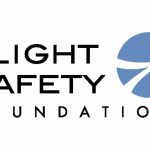Robinson Helicopter Hits Milestone
by Curt Epstein – March 22, 2021 AINonline
Torrance, California-based Robinson Helicopter started off 2021 with the delivery of its 13,000th rotorcraft in company history. But as it came amid the ongoing distractions caused by the Covid pandemic, the manufacturer didn’t even notice the milestone until weeks later. According to company president Kurt Robinson, that tally includes more than 1,000 of the airframer’s turbine-powered flagship R66s, nearly 5,000 of its two-seater R22s, and more than 7,000 of its four-place R44s, the latter two piston-engined.
“Certainly, the total number is impressive and, more importantly, you have an obligation of duty that we want to be here and keep those operating,” he told AIN. “We still have aircraft flying that were produced in the ’80s, ’90s, and 2000s, so it’s something that we are proud of and we just keep working to keep upgrading the fleet and keep everyone moving along.”
That obligation was sorely tested last year during the height of the Covid pandemic when California faced a lockdown to curb the spread of the disease. “We looked pretty good until about January, then all of a sudden we had people getting affected,” said Robinson. “L.A. County imposed that shutdown and we had to send everybody home literally for nine weeks because everybody was dealing with Covid.”
The company spent days trying to determine if it was considered an essential service or not, and once it was decided that it was, the airframer began bringing back key workers. “At first we just had the minimum stuff, the repair station, but then as we went on it became better defined that yes we are an essential service, so we could, following all the protocols, bring people back, but we did it very slowly,” Robinson noted. “It took a lot of effort from a lot of people here, but we were really able to maintain service, particularly if someone is sending you [a component], being able to have the right people work on it, we were able to do that.”
The company put up plastic barriers, established socially-distanced work areas, painted the now-ubiquitous footprints on the floor in high traffic areas, and instituted a mask mandate. Temperature checks were instituted at the beginning of each shift with a scanner mounted near the time clock. “The tricky part was if they came in here [infected] to figure it out and get them out of here so they wouldn’t infect anyone else,” Robinson stated. “We created little pods of workers so that at least we had it isolated down to two or three people that were really kind of in contact with each other.”




